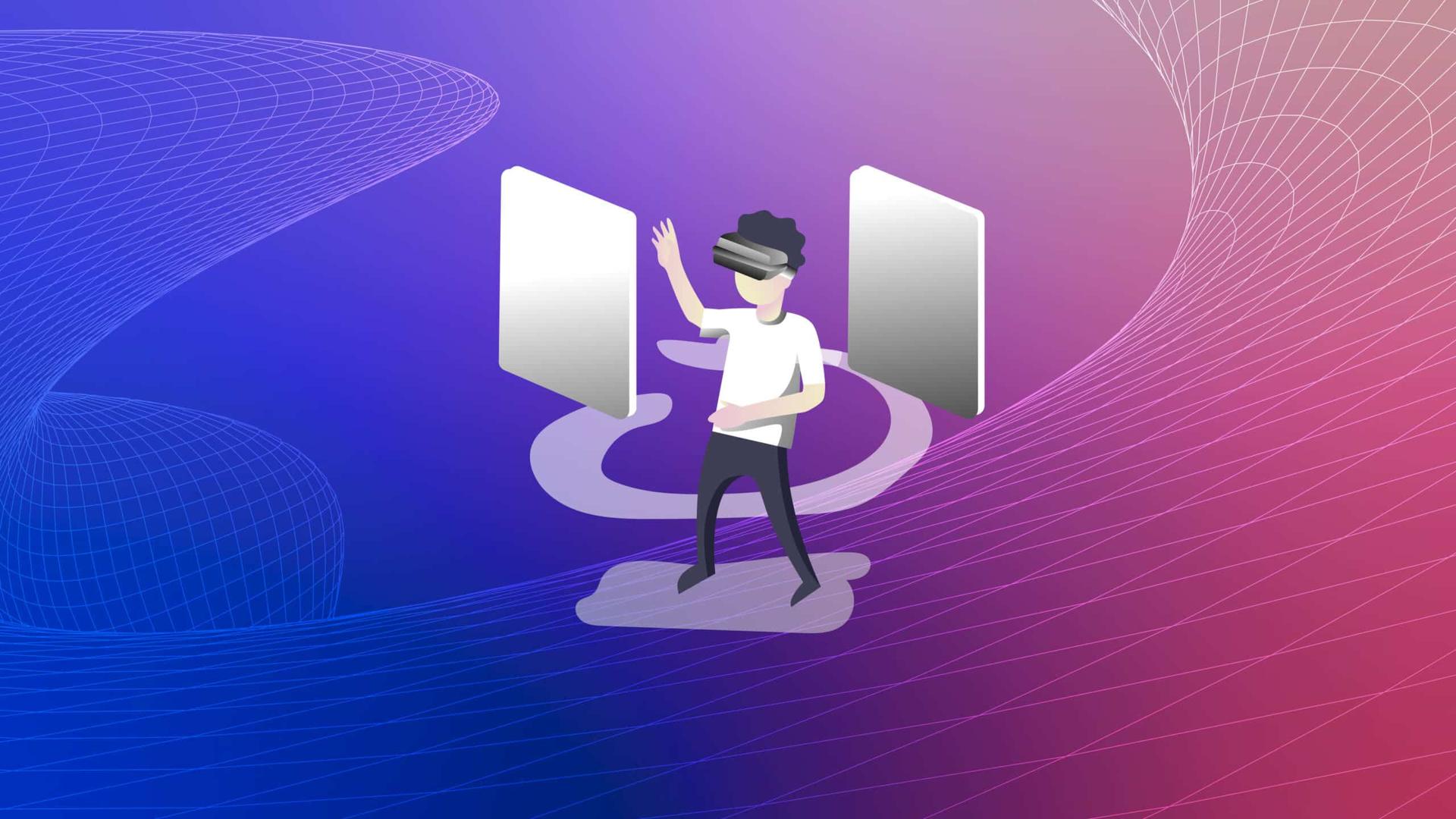Metaverse Art: The Creativity In Virtual Worlds

In a world where technology continues to push the boundaries of human experience, the concept of virtual worlds has taken center stage. Among the many facets that make up the metaverse, one element stands out as a testament to human creativity and innovation: metaverse art.
Join Metastack in this blog post as we explore the role of art and creativity in virtual worlds, delve into the concept of virtual art galleries, and understand how the metaverse is changing the way we perceive and interact with art.
The Metaverse: A Canvas for Imagination
Before we explore the metaverse art, let's first understand the metaverse itself. The metaverse is a collective virtual shared space created by converging virtually enhanced physical and digital reality.
It's a place where people can interact, socialize, work, play, and create in a digital environment that mirrors the natural world in many ways. The metaverse proved very intriguing because of its canvas for human imagination and creativity.
Unlike the physical world, the metaverse isn't bound by the laws of physics or geography. This means that artists, designers, and creators have a new platform for expressing themselves. The result? A vibrant, dynamic space where metaverse art flourishes.
Read: A Brief History of Virtual Worlds Leading to the Metaverse
What Do We Mean by Metaverse Art?
In the context of the metaverse, virtual art is an innovative and transformative way of creating, experiencing, and sharing art. It leverages the digital landscape to explore art forms that couldn't exist in the physical world.
Here, artists are not restricted by the limitations of biological materials or spatial constraints. They can let their imagination run wild and bring their most fantastic visions to life.
Virtual art encompasses a wide range of creative expressions, including:
Digital Painting: Artists use virtual brushes and canvases to create stunning, immersive digital paintings that can be experienced in virtual reality.
3D Sculpting: Sculptors can sculpt and mold 3D objects with incredible detail, turning their creations into interactive art pieces within the metaverse.
Augmented Reality (AR): Artists blend the virtual and physical worlds, allowing people to see their artwork in the context of the natural world through the lens of AR.
Interactive Installations: Artists build interactive art installations that react to the movements and actions of the visitors, creating a unique and engaging experience.
Virtual Photography: In the metaverse, even photography takes on a new dimension. Artists capture breathtaking scenes and moments within these virtual worlds.
The metaverse provides a unique stage for artists to experiment with new mediums and techniques, pushing the boundaries of what art can be. It's a place where innovation knows no bounds, and the traditional rules of the art world are rewritten.

The Virtual Art Gallery: Where Art Meets Technology
In the physical world, art galleries have long been revered as spaces where art is displayed and admired. The metaverse brings a new twist to this concept, giving rise to virtual art galleries. These galleries serve as the digital homes for metaverse art, allowing artists to showcase their creations and for art enthusiasts to immerse themselves in a world of creativity.
What is a virtual art gallery?
A virtual art gallery is a digital space that simulates the experience of visiting a physical art gallery with a twist. It leverages technology to create a more immersive and interactive experience for visitors. Here are some key features of virtual art galleries:
Immersive Environments: Visitors can explore art in stunning 3D environments, often replicating real-world gallery layouts.
Interactive Exhibits: Many virtual galleries allow visitors to interact with the art by providing information or enabling virtual tours.
Social Interaction: Virtual galleries often include chat and interaction features, allowing visitors to engage with others while exploring the art.
Endless Possibilities: Unlike physical galleries, virtual galleries are not limited by space so they can host a vast art collection.
One of the remarkable aspects of virtual art galleries is that they are accessible to people worldwide. You no longer need to travel to see an art exhibit physically; you can simply log in from the comfort of your home and explore a virtual world filled with art.
Virtual Worlds: The Ultimate Canvas
Virtual worlds serve as the backdrop for metaverse art, and they play a pivotal role in how art is created and experienced. These digital realms are rich, immersive environments where creativity knows no bounds. As technology advances, virtual worlds become increasingly detailed, interactive, and realistic. This progress is further fueling the growth of metaverse art.
Let's take a closer look at the connection between virtual worlds and art:
Limitless Possibilities: In virtual worlds, artists are not limited by physical constraints. They can create majestic landscapes, towering sculptures, and fantastical scenes that defy reality.
Collaborative Art: Virtual worlds allow multiple artists to collaborate on projects, transcending geographical barriers and blending their talents uniquely and fascinatingly.
Art as an Experience: Art in virtual worlds is often more than just a static image on a wall. It can be an experience, an adventure, or an interactive journey, pushing the boundaries of traditional art forms.
Preservation and Accessibility: The digital nature of virtual art means it can be easily preserved and shared with future generations, ensuring its longevity.
In the dynamic realm of metaverse art, virtual worlds serve as the canvas and driving force, enabling limitless creativity, collaboration, immersive experiences, and long-term accessibility.

The Intersection of Metaverse Art and Technology
The metaverse is a testament to the ever-evolving relationship between art and technology. It's a space where traditional art forms merge with cutting-edge tech, creating a vibrant ecosystem where innovation is the norm.
Augmented Reality (AR) and Virtual Reality (VR): These technologies have transformed how we perceive and interact with art. AR and VR art installations immerse viewers in the artwork, often blurring the lines between the virtual and physical worlds.
NFTs (Non-Fungible Tokens): NFTs have become a revolutionary force in the art world. They allow artists to tokenize their digital creations, proving ownership and authenticity. This has opened up new avenues for artists to monetize their work and engage with a global audience.
Blockchain Technology: Blockchain plays a crucial role in the metaverse by ensuring the provenance and security of digital art. It adds an extra layer of trust to the art market.
AI-Generated Art: Machine learning and AI have given rise to art generated by algorithms, challenging our perception of creativity and authorship.
The metaverse is an ever-evolving fusion of art and technology, where traditional forms merge with innovations like AR, VR, NFTs, blockchain, and AI-generated art, pushing the boundaries of creativity.
The Metaverse Art Community
Artists, collectors, curators, and enthusiasts from around the world form a vibrant and diverse metaverse art community. This community is a testament to the power of the metaverse to connect like-minded individuals who share a passion for creativity and innovation.
Artist Communities: The metaverse is a hub for artist communities where creators can collaborate, share their work, and find inspiration. It's a place where artists can learn from each other and push the boundaries of their creativity.
Collectors and Investors: The rise of NFTs has attracted collectors and investors to the metaverse art scene. They see the potential in owning unique digital assets and actively participate in this evolving art market.
Curators and Galleries: Just as in the physical world, curators and galleries play a crucial role in promoting and showcasing metaverse art. They help curate collections, organize exhibitions, and bridge the gap between artists and their audiences.
Art Enthusiasts: Anyone can join the metaverse art community, and enthusiasts have a unique opportunity to explore art like never before. They can attend virtual exhibitions, interact with artists, and collect digital art that resonates with them.
The metaverse art community, a vibrant and diverse ecosystem, unites artists, collectors, curators, and enthusiasts, fostering collaboration and innovation, propelled by artist communities, NFT-driven collectors, dedicated curators, and art enthusiasts who are redefining how art is created, experienced, and shared in the digital age.
The Future of Metaverse Art
As technology advances, the future of metaverse art holds endless possibilities. Here are some key trends to watch for:
Increased Realism: Virtual worlds are becoming more realistic, blurring the lines between the digital and physical. This will open up new avenues for artists to create immersive experiences.
Enhanced Interactivity: Artists will continue to push the boundaries of interactivity, allowing viewers to participate actively in the art.
Cross-Medium Collaboration: Expect more collaborations within the metaverse between artists, musicians, and even architects.
Expanded NFT Ecosystem: The NFT ecosystem will continue to evolve, potentially incorporating more features like royalties for artists.
Art and Education: Virtual skills will be increasingly necessary in education and cultural preservation.
The metaverse art scene is a testament to the power of human creativity, innovation, and adaptability. It's a space where traditional art forms blend with cutting-edge technology to create a dynamic and ever-evolving landscape.

Final Thoughts
The metaverse serves as an expansive canvas for metaverse art, transcending traditional boundaries and enabling artists to create grand landscapes, monumental sculptures, and imaginative scenes. Metaverse art redefines the very essence of art, turning it into an immersive adventure that challenges conventional forms.
In essence, the metaverse is a portal to a new era of artistic expression, where the artist's boundless imagination is the only limit. This redefinition of art in the metaverse promises to shape the future of creativity in unparalleled ways.
Keep up with Metastack blog to learn more about the metaverse!



